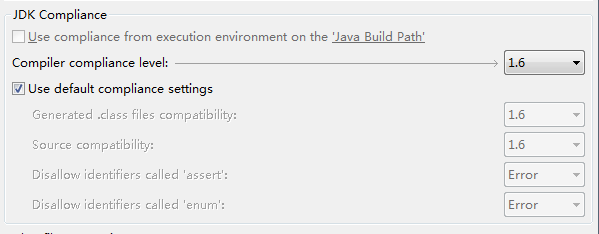序列化的5w2h分析
what:序列化是一种将java对象流化的机制
how:将一个实现了Serializable接口的对象的状态写入byte[],传输到另外一个地方,将其读出进行反序列化得对象(含状态)。状态就是类中的属性是含有值的。
why:方便对象在网络间进行传播,并且可以随时把对象持久化到数据库、文件等系统里
when:对象需要远程过程调用,缓存到文件或DB中(hessian,rmi,ejb)
where:发送接口处,写入文件的入口处
who:发送端序列化,接收端反序列化
how much:序列化本身是昂贵的,但软件工程本身是复杂,在解藕与性能之间架构师要做一个判断。
实验环境


|
1
|
SerializeException 可自定义,继承runtimeException
|
hessian序列化工具类
|
1
2
3
4
5
6
7
8
9
10
11
12
13
14
15
16
17
18
19
20
21
22
23
24
25
26
27
28
29
30
31
32
33
34
35
36
37
38
39
40
41
42
43
44
45
46
47
48
49
50
51
52
53
54
55
56
57
58
59
60
61
62
63
64
65
66
67
68
69
70
71
72
73
74
75
76
77
78
79
80
81
82
83
84
85
86
87
88
89
|
packagecom.uet.common.utils;
importjava.io.ByteArrayInputStream;
importjava.io.ByteArrayOutputStream;
importjava.io.IOException;
importcom.caucho.hessian.io.HessianSerializerInput;
importcom.caucho.hessian.io.HessianSerializerOutput;
importcom.uet.common.exception.SerializeException;
publicclassHessianObjectSerializeUtil {
/**
*
* 纯hessian序列化
*
*
@param <T>
*
*
@param object
*
*
@return
*
*
@throws Exception
*/
publicstatic<T>byte[] serialize(T object) {
if(object ==null) {
thrownewNullPointerException();
}
byte[] results =null;
ByteArrayOutputStream os =null;
HessianSerializerOutput hessianOutput =null;
try{
os =newByteArrayOutputStream();
hessianOutput =newHessianSerializerOutput(os);
//write本身是线程安全的
hessianOutput.writeObject(object);
os.close();
results = os.toByteArray();
}catch(Exception e) {
thrownewSerializeException(e);
}finally{
try{
if(os !=null)
os.close();
}catch(IOException e) {
// TODO Auto-generated catch block
e.printStackTrace();
}
}
returnresults;
}
/**
*
* 纯hessian反序列化
*
*
@param bytes
*
* @return
*
* @throws Exception
*/
@SuppressWarnings("unchecked")
publicstatic<T> T deserialize(Class<T> resultClass,byte[] bytes) {
if(bytes ==null) {
thrownewNullPointerException();
}
T result =null;
ByteArrayInputStream is =null;
try{
is =newByteArrayInputStream(bytes);
HessianSerializerInput hessianInput =newHessianSerializerInput(is);
result = (T) hessianInput.readObject();
}catch(Exception e) {
thrownewSerializeException(e);
}finally{
try{
if(is !=null)
is.close();
}catch(IOException e) {
thrownewSerializeException(e);
}
}
returnresult;
}
}
|
java自带的序列化工具类
|
1
2
3
4
5
6
7
8
9
10
11
12
13
14
15
16
17
18
19
20
21
22
23
24
25
26
27
28
29
30
31
32
33
34
35
36
37
38
39
40
41
42
43
44
45
46
47
48
49
50
51
52
53
54
55
56
57
58
59
60
61
62
63
64
65
66
67
68
69
|
packagecom.uet.common.utils;
importjava.io.ByteArrayInputStream;
importjava.io.ByteArrayOutputStream;
importjava.io.Closeable;
importjava.io.IOException;
importjava.io.ObjectInputStream;
importjava.io.ObjectOutputStream;
importcom.uet.common.exception.SerializeException;
publicclassObjectsSerializeUtil{
publicstatic<T>byte[] serialize(T value) {
if(value ==null) {
thrownewNullPointerException("Can't serialize null");
}
byte[] result =null;
ByteArrayOutputStream bos =null;
ObjectOutputStream os =null;
try{
bos =newByteArrayOutputStream();
os =newObjectOutputStream(bos);
os.writeObject(value);
os.close();
bos.close();
result = bos.toByteArray();
}catch(IOException e) {
thrownewIllegalArgumentException("Non-serializable object", e);
}finally{
close(os);
close(bos);
}
returnresult;
}
@SuppressWarnings("unchecked")
publicstatic<T> T deserialize(Class<T> resultClass,byte[] in) {
T result =null;
ByteArrayInputStream bis =null;
ObjectInputStream is =null;
try{
if(in !=null) {
bis =newByteArrayInputStream(in);
is =newObjectInputStream(bis);
result = (T) is.readObject();
is.close();
bis.close();
}
}catch(IOException e) {
thrownewSerializeException(String.format("Caught IOException decoding %d bytes of data", in ==null?0: in.length) + e);
}catch(ClassNotFoundException e) {
thrownewSerializeException(String.format("Caught CNFE decoding %d bytes of data", in ==null?0: in.length) + e);
}finally{
close(is);
close(bis);
}
returnresult;
}
publicstaticvoidclose(Closeable closeable) {
if(closeable !=null) {
try{
closeable.close();
}catch(Exception e) {
thrownewSerializeException(e);
}
}
}
}
|
实验运行的类(BaseGrade您可以自己定义,但要实现Serializable接口)
|
1
2
3
4
5
6
7
8
9
10
11
12
13
14
15
16
17
18
19
20
21
22
23
24
25
26
27
28
29
30
31
32
33
34
35
36
37
38
39
40
41
42
43
44
45
46
|
packagecom.uet.common.utils;
importcom.uet.course.entity.BaseGrade;
publicclassSerializeTest {
privatestaticintcount=10000;
publicstaticvoidmain(String[] args)throwsException {
/*BaseGrade grade = new BaseGrade();
grade.setId(120L+10);
grade.setName("唔年纪");
grade.init();
byte[] results=HessianObjectSerializeUtil.serialize(grade);*/
//System.out.println(results.length);
hessianObjectSerialize();
javaObjectSerialize();
}
publicstaticvoidhessianObjectSerialize(){
longstart = System.currentTimeMillis();
for(inti=0;i<count;i++){
BaseGrade grade =newBaseGrade();
grade.setId(120L+i);
grade.setName("唔年纪");
grade.init();
byte[] results=HessianObjectSerializeUtil.serialize(grade);
BaseGrade result=HessianObjectSerializeUtil.deserialize(BaseGrade.class,results);
//System.out.println(result.getId());
}
longend = System.currentTimeMillis();
System.out.println("hessianObjectSerialize耗时:"+ ((end - start) /1000.0) +" seconds");
}
publicstaticvoidjavaObjectSerialize(){
longstart = System.currentTimeMillis();
for(inti=0;i<count;i++){
BaseGrade grade =newBaseGrade();
grade.setId(120L+i);
grade.setName("唔年纪");
grade.init();
byte[] results=ObjectsSerializeUtil.serialize(grade);
BaseGrade result=ObjectsSerializeUtil.deserialize(BaseGrade.class,results);
//System.out.println(result.getId());
}
longend = System.currentTimeMillis();
System.out.println("javaObjectSerialize耗时:"+ ((end - start) /1000.0) +" seconds");
}
}
|
序列化的字节260btye
实验结果
循环1次(运行10次平均结果):
hessianObjectSerialize耗时:0.05 seconds
javaObjectSerialize耗时:0.01 seconds
循环10次(运行10次平均结果):
hessianObjectSerialize耗时:0.06 seconds
javaObjectSerialize耗时:0.015 seconds
循环100次(运行10次平均结果):
hessianObjectSerialize耗时:0.074 seconds
javaObjectSerialize耗时:0.04 seconds
循环1000次(运行10次平均结果):
hessianObjectSerialize耗时:0.162 seconds
javaObjectSerialize耗时:0.123 seconds
循环10000次(运行10次平均结果):
hessianObjectSerialize耗时:0.6 seconds
javaObjectSerialize耗时:0.47 seconds
循环100000次
hessianObjectSerialize耗时:4.668 seconds
javaObjectSerialize耗时:4.144 seconds
实验结论
java自身所带的方法明显比hessian自带的序列化效率更高。
来源究问社区博客:http://www.ijiuwen.com/blog/1004286372888576
转载请注明出处





















 2343
2343











 被折叠的 条评论
为什么被折叠?
被折叠的 条评论
为什么被折叠?








